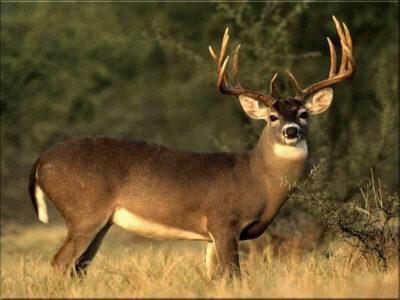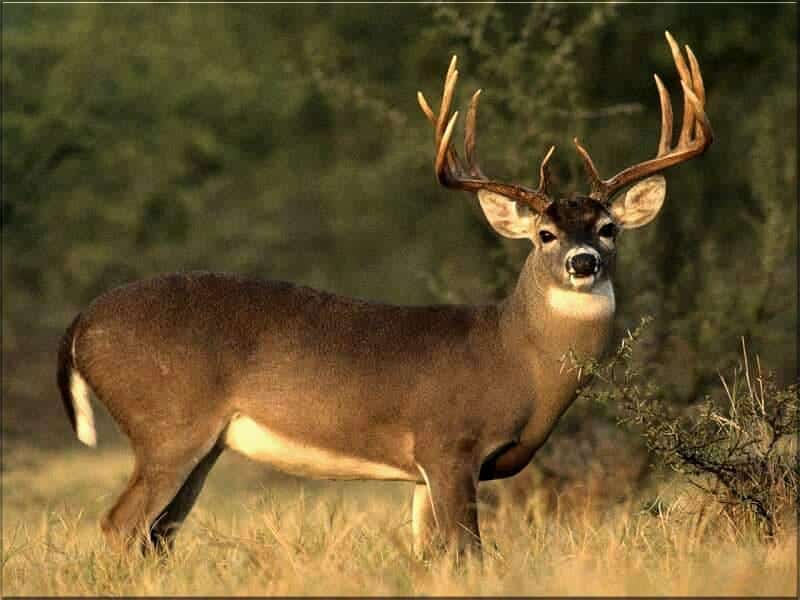
Sure, you can charge out to your favorite hunting grounds and attempt to catch that trophy buck, but unless you do your homework, the only thing you’re likely to catch are ticks, mosquito bites or a cold. If you want to reduce the hunting part and increase the catching part, follow some simple tips for success:
1. Recon the area – from your desk: Nowadays with powerful tools like Google Earth and online high resolution topographical maps, you should have an easy job of determining the most likely location for deer hotspots such as game trails, watering holes and bedding areas. While the analysis you make of these spots will vary from wild guesses to uncanny accuracy depending on your hunting experience, doing a map recon will save you lots of time and at least give you a plan to work from. Just by looking at the topographical maps and then Google Earth, you’ll give yourself the proverbial “lay of the land” even before setting foot on the hunting grounds. Not only is this good for locating potential deer rich spots, it’s also good for spotting things that might ruin your day, like locked gates on fire roads or nearby human habitation which might not be visible from the ground.
2. Time to bring in video surveillance: There isn’t a single device that’s revolutionized hunting as much as the humble trail cam – a waterproof digital camera connected to a motion sensor. When the sensor detects motion, it snaps off pictures, allowing you to see what kind of action there is. After you’ve done a map recon, go boots on the ground and scout the areas you thought might be good on your map. Before emplacing trail cams, look for spoor such as scat and tracks that indicate there might be a local deer presence. When you’re satisfied that the area might yield something good, set up some trail cams. The data you get off these will be telling – even some areas that are heavily tracked may not have seen deer come through there in a while, and there’s nothing as dull as sitting up in a tree stand watching a game trail that’s devoid of life. Keep in mind that setting up a few trail cams and then going home to a roaring fire and a hot cup of coffee is better time spent than stubbornly freezing in a tree stand waiting for deer that will never come.
3. Watch where you put your tree stands: Avoid using tree stand locations that you’ve used in the past or even those used by other hunters. Deer will eventually become aware of the danger and distinctive evidence of human presence and begin to avoid the area. Instead, get creative with your tree stand placement even if you’re covering the same trail. Observe the trail from different angles (always downwind from game, of course) and from varying heights. If possible, keep the tree stand above 20 feet from the ground; not only is your scent less likely to alert a passing buck; at that height you are above the range of his normal senses as danger rarely comes from above in the deer world.
4. Mind your stink: If you’ve gone hunting only to return empty handed, and without even seeing a single deer, keep in mind that you were probably seen by a deer – or almost certainly smelled by one. A deer’s sense of smell is its uncanny way of avoiding predators, and this sense of smell is powerful, accurate and highly developed. For that reason, it’s not only important to wash your hunting clothes with unscented detergent, but it’s also important to wash yourself. There are many scent-removing soaps out there specifically marketed to hunters, and you should use them before a hunt. During a hunt, use scent-removing wipes to keep body odor in check. Yes, this also applies to everything you take out with you for the hunt, including your weapon, tree stand and backpacks!
5. Mind the wind: Just because you’ve carefully set up your stand downwind of your potential targets, doesn’t mean that the wind will blow from that direction all day. Storms, weather systems and minor daily anomalies can change the direction of the wind either briefly, or for the remainder of the day, so look at the forecast before you go hunting. Keep in mind that terrain features such as canyons and valleys can also create their own localized micro climates.
Taking the time to work on the preparation side of hunting isn’t as exciting as actually stalking the deer, but it’s an important facet of the sport if you actually want to catch anything.
